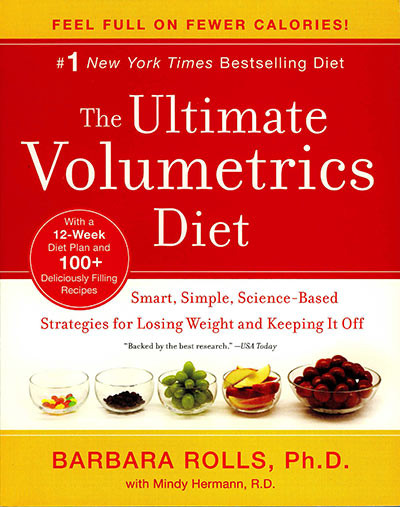UNIVERSITY PARK, Pa. — Swapping out zoodles for noodles or grated cauliflower for rice aren’t just trendy ways to eat vegetables, they’re also examples of using Volumetrics, a diet developed by Penn State’s Barbara Rolls that was ranked the No. 2 weight loss plan in this year’s U.S. News & World Report’s Best Diets.
The annual ranking — now in its ninth year — combines experts’ ratings on such factors as how easy the diet is to follow, its nutritional value and its effectiveness for short- and long-term weight loss results, among others. Volumetrics has appeared on the rankings every year since 2011.
Rolls, Helen A. Guthrie Chair in Nutrition and director of the Laboratory for the Study of Human Ingestive Behavior at Penn State, credits the diet’s focus on healthy eating habits backed up by science for the lasting success of Volumetrics, created almost 20 years ago.
“There are no gimmicks with Volumetrics — we’re not banning certain foods or advocating for particular macronutrient compositions,” Rolls said.
“What Volumetrics does do is it shows you how to have the same amount of food by weight or volume but with fewer calories.”
The Volumetrics program encourages people to eat foods that are less calorie dense, which allows people to feel full for less calories.
For example, when starting a meal with a large bowl of broth-based soup, studies from her lab show people eat fewer calories at the meal and feel just as full as when they had no first course.
Rolls said the goal of Volumetrics is to encourage people to associate weight management with healthy eating, instead of resorting to a fad diet that might not be sustainable long term.
“Sometimes people think that if they want to lose weight, they need to go on a very restrictive plan that requires you to count calories or nutrients or eliminate certain foods, but they don’t have to,” Rolls said.
“If you learn how to reduce the calorie density of favorite foods, you’re going to learn how to manage your weight in ways that are healthy, enjoyable and sustainable.”
Rolls said she based the Volumetrics diet on her many years of research on human nutrition and eating habits, including the discovery that most people tend to eat the same amount or weight of food over a day or two.
“Once we realized that most people eat similar amounts of food day to day, instead of similar calorie levels, it was clear that the density of calories packed into that amount of food would impact overall calorie intake,” Rolls said.
“That’s why just telling someone to eat less is going to backfire, because our bodies learn over time to feel satisfied with a certain amount of food.”
For those interested in getting started with Volumetrics, Rolls said a helpful place to start is by keeping a food diary and then learning how to tweak your favorite foods to be less calorie-dense and just as tasty.
“If you often have sandwiches for lunch, for example, you can bulk up the sandwich with favorite vegetables and add some herbs or spices for flavor,” Rolls said.
“Whether you’re cooking for yourself or are eating at a restaurant, Volumetrics shows you how to find healthy and satisfying foods.”
Rolls has written three books about Volumetrics: “Volumetrics: Feel Full on Fewer Calories” (also published under the title “The Volumetrics Weight-Control Plan”) in 2000, “The Volumetrics Eating Plan” in 2005 and “The Ultimate Volumetrics Diet” in 2012.
Volumetrics also was ranked No. 2 in Best Diabetes Diets, No. 6 for Best Diets Overall, No. 6 in Best Diets for Healthy Eating and No.9 in Best Fast Weight-Loss Diets.
For more information, visit U.S. News Best Weight-Loss Diets online.




